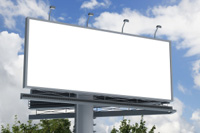Media literacy alert! This article about covert advertising does exactly what it talks about. It masquerades as content while advertising products…
When advertising becomes content, who wins “” advertisers or publishers, or both?
by Mathew Ingram
PaidContent.org
March 2, 2013
One of the biggest trends in media at the moment is “sponsored content” or what some call “native advertising.” But is it the savior of online media, or just another mirage in the advertising desert?
 Andrew Sullivan, the former Daily Beast writer who recently launched his own standalone publishing venture, has made it pretty clear that he doesn”™t like advertising, which is why his site is supported entirely by reader subscriptions. And he also made it clear in a recent series of posts that he doesn”™t like the growing trend of sites like BuzzFeed using what they call “sponsored content” as a replacement for traditional advertising “” something he suggested was ethically questionable for media entities of all kinds.
Andrew Sullivan, the former Daily Beast writer who recently launched his own standalone publishing venture, has made it pretty clear that he doesn”™t like advertising, which is why his site is supported entirely by reader subscriptions. And he also made it clear in a recent series of posts that he doesn”™t like the growing trend of sites like BuzzFeed using what they call “sponsored content” as a replacement for traditional advertising “” something he suggested was ethically questionable for media entities of all kinds.
Like it or not, however, this phenomenon is becoming more and more commonplace “” and not just at new-media ventures like BuzzFeed but also at traditional publishers like The Atlantic. Is it the savior of online media, or just another mirage in the advertising desert? This is a question we are going to discussing at length at paidContent Live in New York on April 17, including a panel entitled “The future of native advertising: Blurring ads and content.”
If it”™s useful, does it matter if it”™s sponsored?
The principle behind what some call sponsored content and others refer to as “native advertising” (and newspapers and magazines called “advertorial”) is that marketing messages and other forms of advertising are more successful when they look and feel just like the other content that surrounds them, rather than an annoying and/or irrelevant interruption. If you can make your message useful, the theory goes, then users are more likely to click or remember.
The most obvious example of this is the kind of advertising that both Twitter and Facebook offer: namely, features like “promoted tweets” and “sponsored stories.” They appear in a user”™s stream just like any other status update or message, but they are advertising that is based on “” and in some cases even includes “” the activity of a user around specific topics (although Facebook”™s version has caused some controversy over the inclusion of status updates).
BuzzFeed, whose president Jon Steinberg will be on our paidContent Live panel, is one of the leading proponents of this concept: co-founder Jonah Peretti has talked about how the startup decided from the beginning not to use traditional banner ads and other forms of advertising, but to pin its hopes on sponsored content. But critics like Sullivan have complained that the sponsored content is too hard to distinguish from the regular content at BuzzFeed.
Another form of native advertising is the kind that Forbes magazine specializes in, with its BrandVoice program. In a nutshell, the magazine provides marketers and advertisers with a platform that is indistinguishable “” apart from the brand names and disclaimers that are posted on their pages “” from the content that appears elsewhere on the magazine”™s website.
Advertising is just another form of media
Forbes”˜ chief product officer Lewis D”™Vorkin, who will also be on our panel at paidContent Live, has written about the idea behind this platform, and the idea is that branded or marketing-related content should be given a status that is equal to that of the magazine”™s traditional content, and that it should succeed or fail based on whether it is actually useful to readers or not. So the blog written by someone who works for a brand or corporate sponsor looks and functions almost exactly the same as any other blog written by a Forbes staffer.
A whole separate category of sponsored content or native advertising is what some marketers like to call “brand journalism,” and Kyle Monson of Knock Twice “” a former journalist who used to run the “brand journalism” practice at JWT in New York “” is going to be on our paidContent Live panel talking about that. This approach sees brands like Coca-Cola and Qualcomm and Intel creating their own content or journalism around topics that are of interest to their customers, without making it explicitly an advertising message.
So with brands becoming publishers and producing “brand journalism,” where does that leave traditional media companies? And are the blurring lines between sponsored content and traditional media a problem, or are critics like Andrew Sullivan just reluctant to embrace this new way of doing things online? Those are just some of the questions we will be tackling at paidContent Live on April 17, so I hope you can join us to continue the debate.
